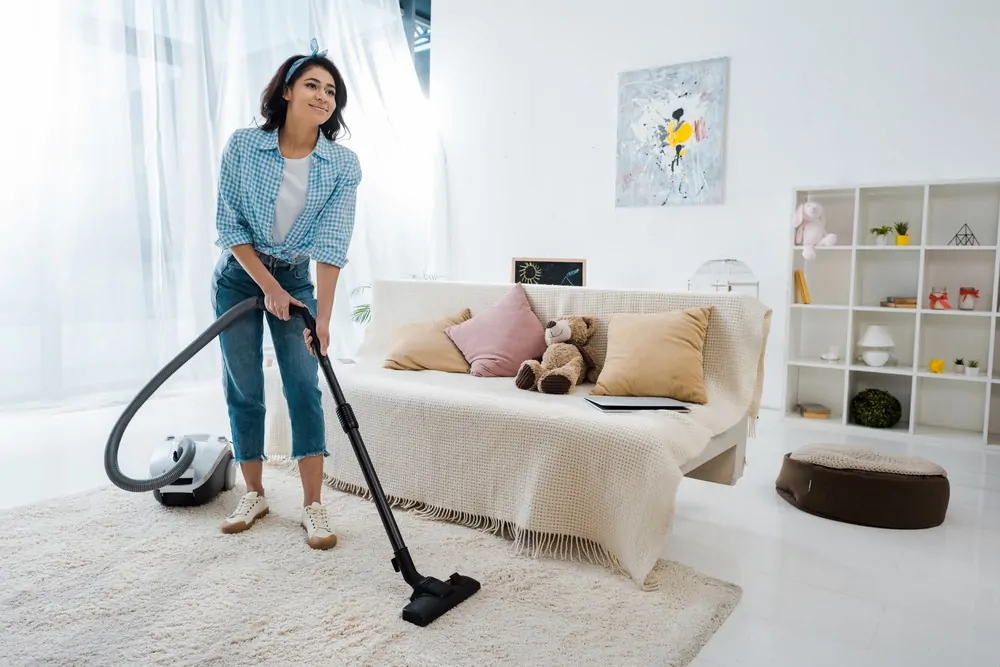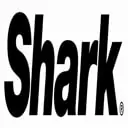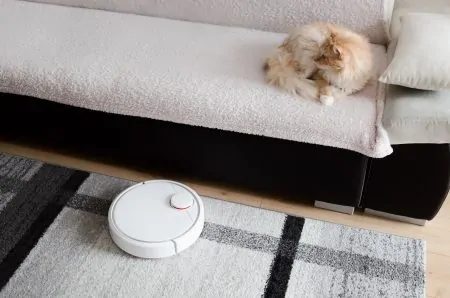Buying a vacuum is not so easy. Most of the time, we concentrate on the brand, suction, or style of vacuum. But one of the most important specifications to consider when purchasing a new one is its longevity.
Manufacturers don’t always tell you the durability of the vacuum. That’s where we come in. If you’re wondering how long do vacuums last, we can help you figure it out.
There are three factors to consider. Once you have noted the lifespan of a particular vacuum, it can help you decide whether it’s worth your pennies.
Key Takeaways
- Vacuum lifespan varies by type: upright and canister vacuums last around eight years, stick vacuums last five to eight years, robot vacuums last three to five years, and handheld vacuums last two to three years.
- The vacuum’s brand can impact its longevity, with brands like Miele, Dyson, Shark, Bissell, and Hoover offering varying lifespans and warranties.
- Regular maintenance, such as cleaning filters and untangling the motorized brush, can extend the life of your vacuum.
- Proper usage and avoiding misuse, like vacuuming up liquids or not tidying up first, can help preserve your vacuum’s functionality and lifespan.
Types of Vacuums and Their Lifespan
Vacuums can last a median of eight years (1). Of course, some will last a few years less than this, while others run longer.
Let’s look at the average lifespan of different types of vacuums to find the right one for you.
1. Upright Vacuum
Considered the “original” vacuum design, the upright is the biggest and most bulky type you can get. But you shouldn’t view this solely as a negative.
Sure, they might be difficult to store and carry around. But they’re often built to last, typically with more suction and sturdier construction.
This means that you may expect an upright vacuum to last a long time — we’d say near the eight-year milestone or beyond.
In addition, they’re normally corded. This means you don’t have to worry about the life of any batteries.
2. Canister Vacuum
A canister vacuum offers similar suction and power to an upright vacuum. They’re corded too. So, you can probably expect a similar lifespan of up to or exceeding eight years.
But they’re viewed as a more portable option. This might mean they’re not as durable and may break with misuse.
3. Stick Vacuum
Stick vacuums are all about being lightweight and versatile for cleaning. This makes them easy to use around the home. But they’re not going to be the most durable vacuum ever. They’re also not designed for cleaning heavily soiled floors.
We’d estimate that stick vacuums may last for around five to eight years. The most well-known brands might also be more trusted when it comes to this style.
4. Robot Vacuum
One of the newest inventions when it comes to vacuums is the robot vacuum. This operates on its own. Robot vacuums are ideal if you’re at work all day or just want to chill out and not worry about vacuuming.
Unfortunately, they just aren’t as robust as upright vacuums. They may also be more likely to run into trouble since you’re not operating them directly.
Robot vacuums are battery-powered. If the batteries are built into the vacuum, this may mean you can’t replace them.
That means your vacuum will only last as long as the battery does. Lithium-ion batteries may last longer than other types. But still, we’d say that robot vacuums may only last between three to five years.
5. Handheld
Last but not least is a handheld vacuum. These are designed to be lightweight and easy to use around the house and even in the car.
The motor isn’t as powerful as other options, and they also run on batteries. A handheld vacuum may last around two to three years, depending on how well you take care of it.
Factors That Influence How Long a Vacuum Lasts
The lifespan of your vacuum is never guaranteed. But it’s not totally unpredictable. Certain additional factors can indicate how long your vacuum might last.
1. The Brand
The manufacturer plays a huge part in controlling the longevity of a vacuum. As a general rule, bigger branded vacuums tend to be better than unbranded, local store products.
Such brands often have more money for investing in premium parts. They’re also likely to complete product research, and the companies generally have higher standards.
They may also offer you a warranty with the vacuum. This is great for peace of mind. But even more, it might indicate the minimum time the brand expects the product to last.
2. Maintenance
One of the most important factors you can control is maintenance. If you take care of your vacuum, you might get more use out of it for many years to come. We’re talking about cleaning it at least once per month.
Also, if you experience a problem, don’t ignore it. For example, if there’s a strange noise or a sudden loss of suction, it may still be possible to get your vacuum repaired.
Regularly cleaning your vacuum may help to increase how long the model lasts. We’ve got some tips for you to follow.
Empty the Dust Canister or Bag Regularly
It doesn’t matter whether you’ve got a bagged or bagless vacuum, be sure to empty it regularly.
If you let it fill to the brim and still vacuum around the home, there’s a chance it might clog the machine. Plus, it’s going to affect how well you can clean too.
Clean the Filters
The filters on your vacuum capture pollen, dust, bacteria particles, and smoke. Naturally, this means they’ll eventually get dirty and clog up. You’ve got to keep on top of this by cleaning the filters.
A lot of vacuums come with washable and reusable filters. So, it’s best to clean them regularly. Wash them under the faucet when they get dirty with dust and debris.
There’s no need for any chemicals to be used — water is enough to rinse away the dirt. Just dry them thoroughly before inserting them back into the vacuum. You don’t want mold to grow and the spores to be released into the air.
Mold could make you sick and cause eye irritation. It could also cause a sore throat, skin rash, or nasal congestion (5).
It’s also recommended to completely replace filters every two to three years for cleaning efficiency.
Untangle the Motorized Brush
The motorized brush at the base of your vacuum is what captures all the dirt, debris, long hair, and carpet fibers. It’s one of the most important parts.
But as it collects all of this grime, dirt can wrap around and put stress on it. This may eventually stop the motorized brush from spinning and cleaning your home.
To avoid this, you should use scissors to cut away any hair and debris from the motorized brush every couple of weeks.
3. Usage
The more you use your vacuum, the more likely it will have a shorter lifespan. Using it regularly will expose the machine to more wear and tear, especially with large spaces.
This is particularly true if your floors and carpet are dirty and heavily soiled since your vacuum has to work harder.
But misuse can also shorten the life of your vacuum. Examples of misuse include not using the correct height adjustment for a high-pile carpet or not choosing the suitable model for your needs.
Stick, handheld, and robot vacuums, for instance, aren’t for heavily soiled floors. Use an upright vacuum instead.
Cleaning up Liquids
Some handheld vacuums are designed to clean up light water spills and accidents. This is often known as having wet/dry vacuuming ability.
But most upright, stick, and canister vacuums aren’t. If you try to vacuum up liquids, this may damage your machine. You also run the risk of electrocuting yourself.
So, it’s best to reach for a mop or paper towel to clean up liquid if you’re planning on getting a regular vacuum.
Being Careless with the Power Cord
If you don’t hold the power cord away from the vacuum during use, it may get cut and frayed by the motorized brush. Eventually, this will make your vacuum unsafe to use with the exposure of electric wires.
In addition, make sure you don’t pull your vacuum by the cord (6).
Not Tidying up First
We know you want to get all household chores done and dusted. But skipping the tidying up stage may end up damaging your vacuum.
Small objects such as toys and coins, as well as glass and screws, can break your vacuum. This includes the bag or, even worse, the motor.
FAQs
In Conclusion
There’s a lot to consider when you’re purchasing a new vacuum. Longevity should be the main factor so that you can get your money’s worth out of your new purchase.
Upright vacuums may last the longest due to their robust and durable design. But several factors play a part in this machine’s lifespan.
For one, the brand has a lot of influence on how the machine is manufactured. We’d say that Miele vacuums may last the longest at up to 20 years. But regular maintenance is essential, as well as using your vacuum correctly.






















